Brunsvigia radulosa
Common names: Candelabra flower; Afrikaans: kandelaarblom; Southern Sotho: Lemathla
Brunsvigia do look fabulous in a container but are at their most spectacular when the eye catching inflorescences are seen in open grassland. The thick leaves have rough edges and spread flat on the ground. The large bulb (200mm in diameter) produces a beautiful candelabra of up to 75 pale to bright pink flowers in summer. When this dries, it breaks off and tumbles around in the wind to distribute the seed. Sunbirds perch with ease on the pedicels and probe the flowers to reach the nectar and pollinate the plant.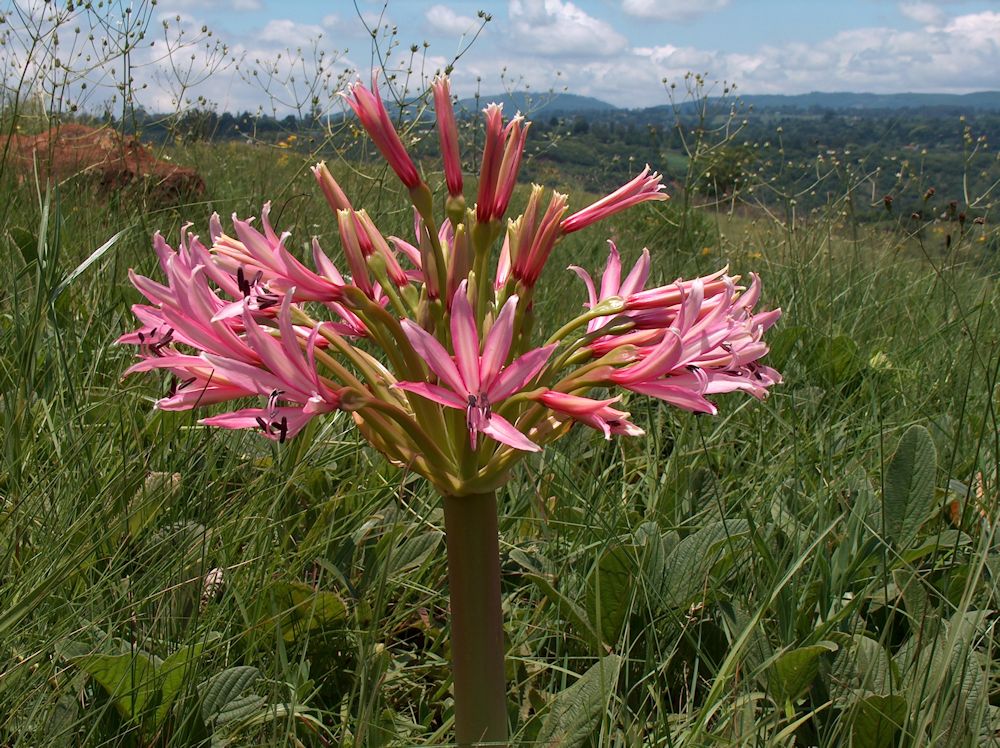
The bulb is traditionally used to seal leaking clay pots and medicinally to ease birth. Seed germinates easily but needs to be looked after carefully. Although it will take many years to flower, it is certainly worth the wait!
The dried flower head with interesting spindle shaped seed capsules, when strung with fairy lights, becomes a festive decoration with an African twist.
Umgeni Valley Nature Reserve in Howick is a good place to see Brunsvigia in flower. Gates open 6am to 7pm, please register at office between 8am and 5pm
Brunsvigia natalensis
Common name: Natal candelabra Flower, Zulu name: umbhola
Driving along the Kamberg road is always a lovely treat, but in summer the spectacular Brunsvigia natalensis clumps , make it a particularly memorable trip. Brunsvigia natalensis prefers marshy conditions, so is threatened as habitat is lost through draining for farming and housing activities. Each large bulb produces between two and six flat, blunt leaves from which the almost perfectly spherical inflorescence of up to half a metre high emerges. Often as many as 50 deep red flowers appear on the tips of the stalks, making an eye-catching display in the grassland. The bulb has a rotten smell, which is illustrated by the Zulu name for the plant, umbhola. The plant is deciduous and once dry, the light fruiting heads break loose and tumble across the grassland scattering seed.
Many of the 20 or so Brunsvigia species found in SA are used traditionally to soothe wounds or cure coughs. Interestingly, in her Guide to the Wildflowers of KZN, Elsa Pooley says it is used to “straighten the bones of children”. The bulbs are rich in alkaloids, which can be extremely toxic. Brunsvigia are not suited to garden conditions so remain a fleeting joy in those parts of the Midlands where their natural habitats have not yet been disturbed.
Brunsvigia grandiflora
Common name: Giant Candelabra flower; Zulu name: umqhele-wenkunzi
Can be 800mm tall in grassland. Flowers from January to March. Flowers can be light or dark pink.
Brunsvigia undulata
Common name: Ruby Brunsvigia
Brunsvigia is a member of the Amaryllis family. The large flowers are borne on stalks creating a big round inflorescence that is visible from quite a distance – usually standing above the surrounding grass. Brunsvigia undulata, which flowers in January and February, has dark red flowers with stamens that curve down and tip up at the ends. There can be up to 80 flowers (each approximately 700mm across) on the inflorescence held aloft on a strong stem, making it pretty spectacular. The blue green leaves are distinct from other members of the family in that they have wavy margins, visible veins and stand erect. The large bulb of other species in the family has many cultural and medicinal uses, so it is likely that B. undulata does too. Usually found near rocks in grassland.
Its status on the Red List of South African Plants is Rare. This is probably due to habitat destruction through agriculture and housing developments. If you have seen this plant, please contact CREW – Custodians of Rare and Endangered Wildflowers – Suvarna Parbhoo at s.parbhoo@sanbi.org.za
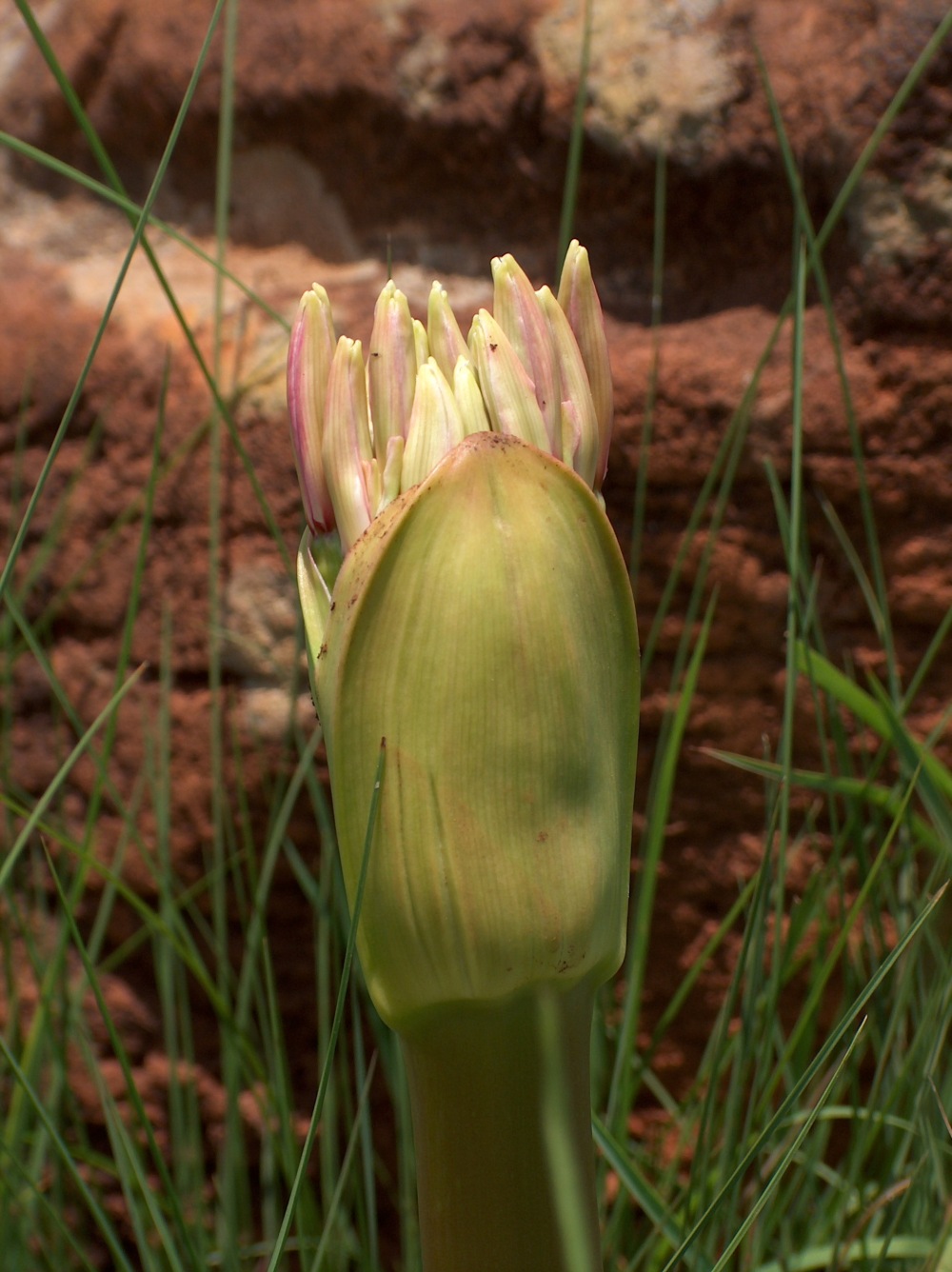
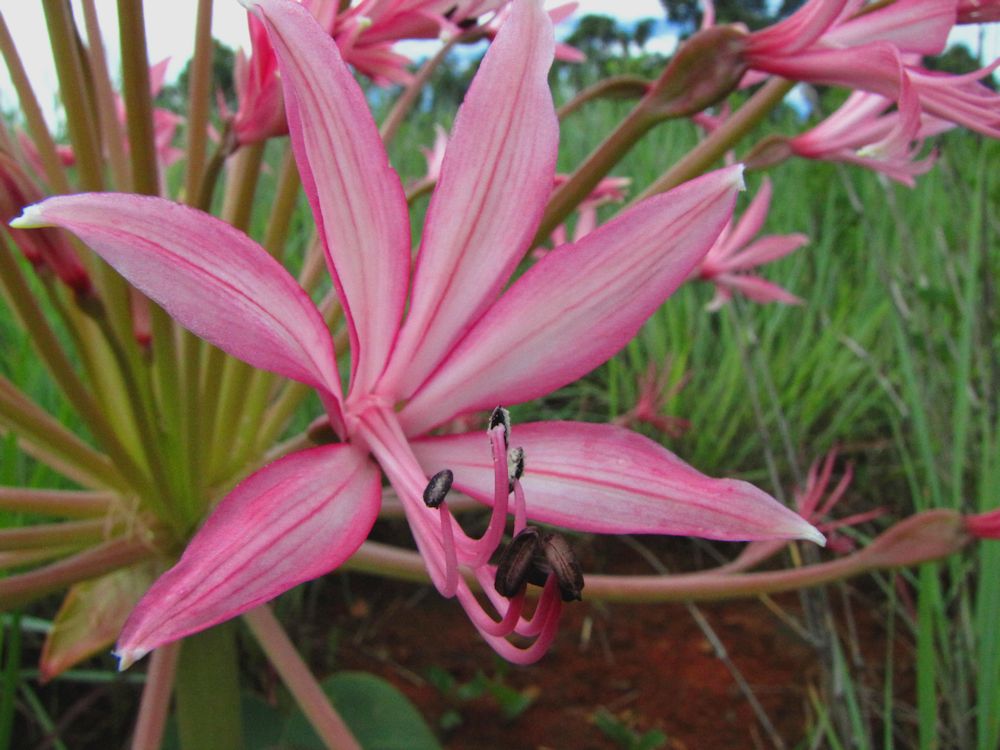
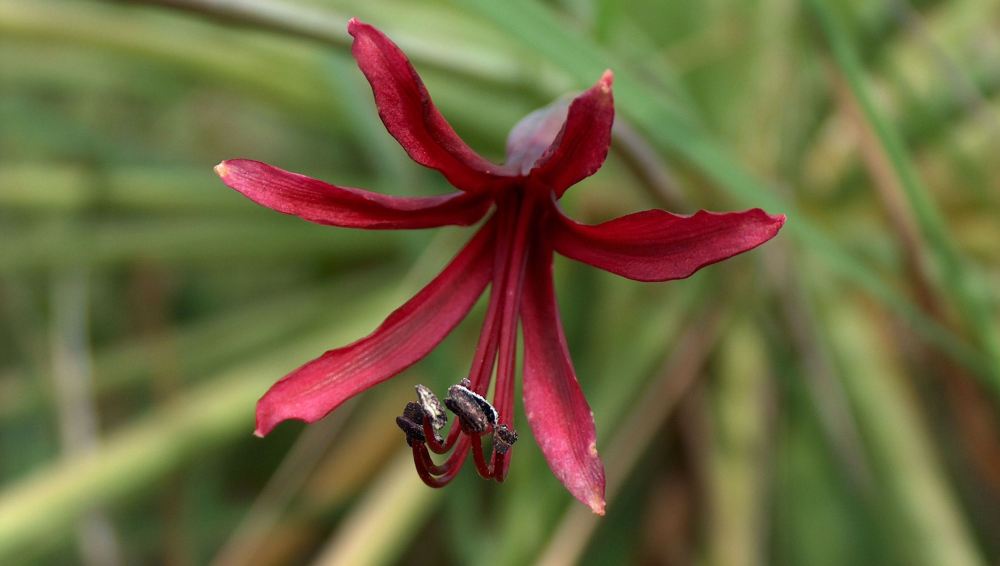
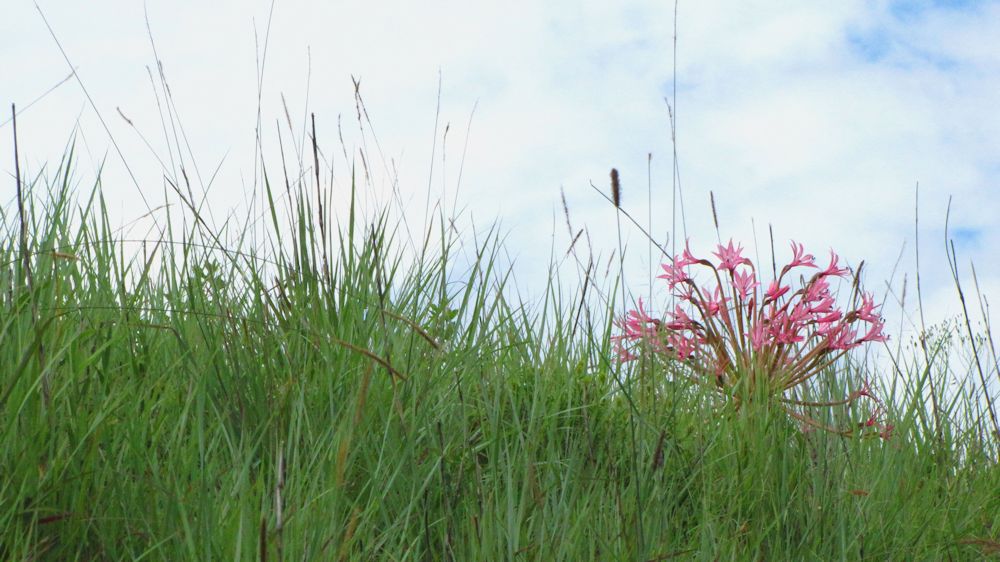
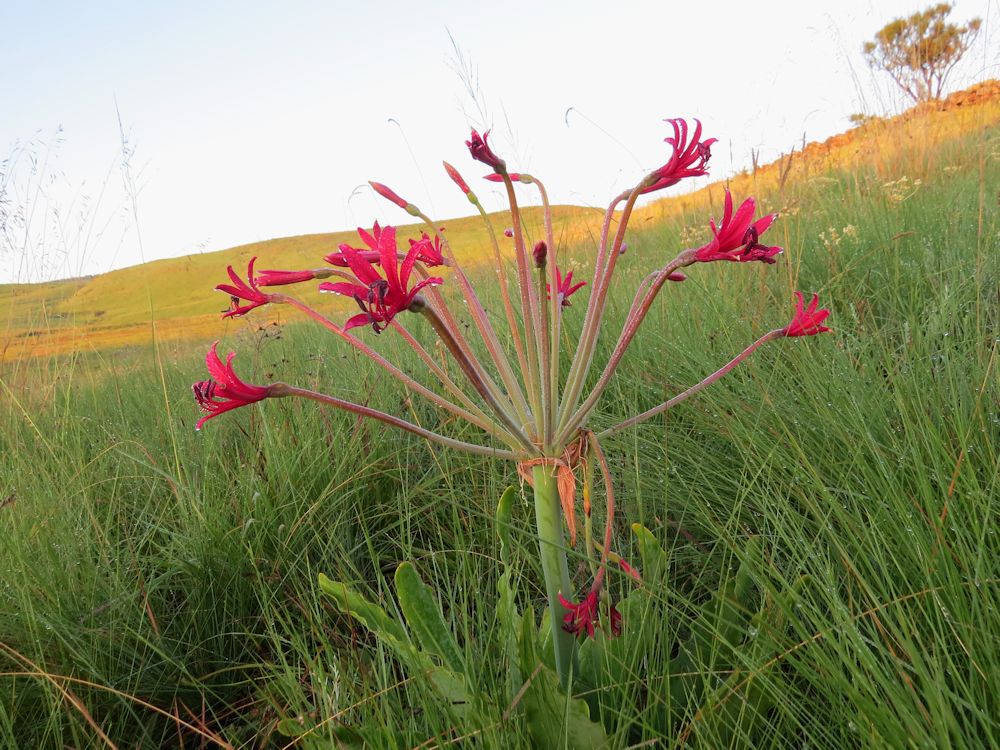
Beautiful!
LikeLike